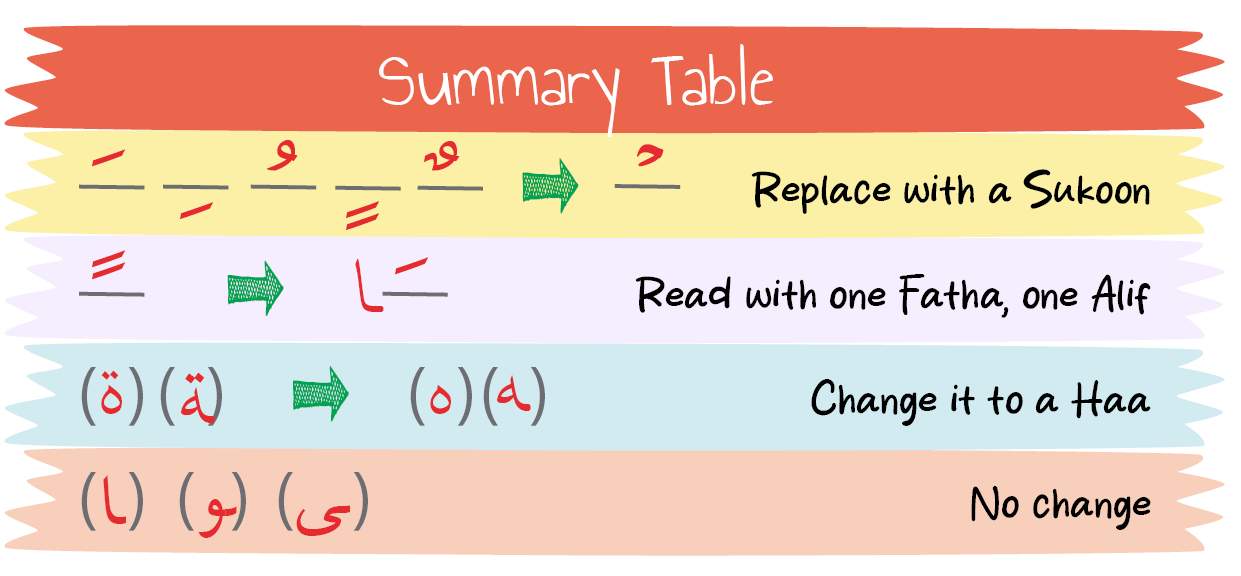RULES OF STOPPING (WAQF)
Where can I stop and start reading again?
While reading the Quran, we may want to take a little break or we may want to stop for various reasons, but we can’t just stop wherever we want to.
There are some rules about where to stop and start reading in these situations.
And we also have to be careful how we stop there? When we stop, we have to look at the last letter of the word, the last letter of the word will tell us how to stop.
In all cases, you must follow the stopping rules described in these pages.
Where to stop and where to start again?
– If we stop at the end of an Ayah or at one of the stop signs which you saw on the previous page, we should stop by following the simple rules you will see on the following pages. If we want to start reading again right away, we can continue reciting where we left off.
– If we need to pause at a place where there is no stop or pause sign in the middle of the Ayah, we should follow the stopping rules and then pause, take a new breath and continue reading with a new breath from an appropriate word behind it (usually a couple of words before).
– If we don’t want to stop at the end of an Ayah or a stop sign, we continue reading by reciting the Haraka of the last letter.
Stopping rules according to the last letter of the word we will stop at:
If the Word Ends in One Vowel, Double Kasra or Double Dhamma
If the last letter has a Fatha, Kasra, Dhamma, double Kasra, double Dhamma or Shadda, we replace it with a Sukoon.












If the Word Ends in Double Fatha
If the last letter has a double Fatha, we read it with one Fatha and one Alif (If there isn’t an Alif, add one).












If the Word Ends in a Round Taa
If the last letter is a round taa ( ة ), we change it to a Haa (ه ) and put a Sukoon on it.












If the Word Ends in Madd Letters
If the last letter of the word is a Madd letter which can be an Alif ( ), Waaw ( ) and
Yaa ( ), no change will take place when stopping.











































